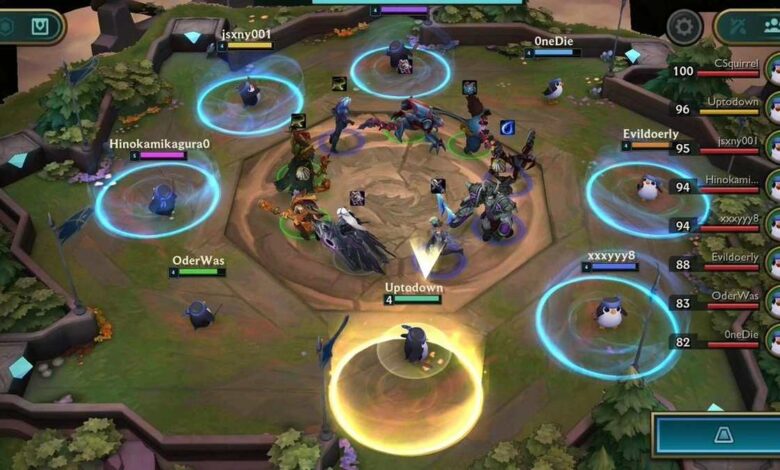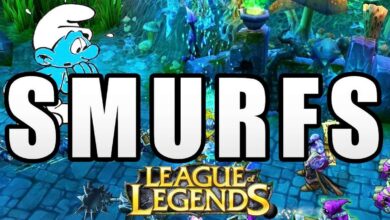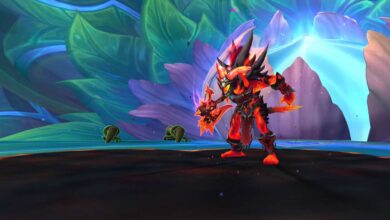
Crafted by Riot Games and rooted in the rich lore of League of Legends, TFT offers players a strategic chessboard battleground where champions duel it out in automated combat. While luck plays its part, it’s the tactical acumen that distinguishes novices from the maestros.
1. The Early Days of TFT
At the onset, TFT mirrored the archaic charm of any budding game—simplistic yet captivating. The original sets brought in familiar champions, grouped into intuitive compositions. As with any game, dominant strategies began to emerge, with certain synergies overshadowing others. Influencers, streamers, and early adopters played pivotal roles in establishing these ‘meta’ compositions, often dictating popular opinion on which strategies reigned supreme.
2. Core Elements of Strategy
As players delved deeper, three core strategic elements surfaced:
- Economy Management: Gold, the lifeblood of TFT. Masters of the game knew the significance of balancing savings with timely spending. While amassing gold increased one’s income, spending it effectively between leveling up and rerolling was crucial to maintaining an edge.
- Scouting: Strategy isn’t concocted in isolation. Seasoned players always have an eye on opponents’ boards. Recognizing potential threats, anticipating moves, and deducing prevailing metas all hinge on effective scouting.
- Positioning: The battlefield isn’t just a grid; it’s a puzzle. Placing champions correctly—a formidable frontline, a protected backline, and apt positioning based on abilities—can make or break a round. This element might be a little tricky and would need extra effort and time to learn. However, you can always enroll in a challenger Teamfight Tactics coaching in order to learn positioning quickly and more efficiently.
3. Adaptability as the Key to Victory
The fickle nature of TFT, with its RNG elements, means that adaptability isn’t just a virtue; it’s a necessity. Even with a well-thought-out strategy, one must be ready to pivot. Whether it’s due to the whims of item drops, the champions you’re dealt with, or evolving opponent strategies, rigidity can be one’s downfall. The game rewards those who evolve, iterate, and aren’t beholden to a single composition.
4. Different Approaches to Economy Strategies
In the intricate dance of Teamfight Tactics, the rhythm is set by gold—the primary currency that dictates your strategic choices. Its management doesn’t follow a linear path; instead, players can choose among varied approaches, each with its rewards and risks. Let’s delve into three prominent economic strategies: Aggressive, Greedy, and Balanced.
Aggressive Economy
This approach is for the brave at heart. Players following an aggressive economic strategy tend to spend gold rapidly in the early and mid-game. The focus is on fast leveling and acquiring key champions early to maintain a winning streak. While this can offer a substantial early advantage and board dominance, it comes with inherent risks. Deplete your gold too quickly without a backup plan, and you might find yourself cornered in the late game, struggling against better-prepared adversaries.
Greedy Economy
On the other end of the spectrum lies the greedy approach—a game of patience and restraint. Players often save their gold, aiming to hit the maximum interest cap as soon as feasible. This method allows for a powerful late game where a stocked treasury can be used for rapid rerolls and acquiring pivotal champions. But, as the name suggests, being too greedy can leave one vulnerable in the early stages, reliant on RNG’s favor to offer salvation in the form of desired champions.
Balanced Economy
Striking a harmonious balance between aggression and greed, this approach is preferred by many seasoned players. A balanced economy focuses on maintaining a healthy balance between spending and saving. Players following this strategy aim for steady growth, ensuring they remain competitive throughout various game phases. While it may not have the early dominance of aggressive play or the vast endgame potential of a greedy strategy, it offers consistency – valuable asset in the unpredictable world of TFT.
5. Advanced Play Techniques
As the depth and breadth of Teamfight Tactics unraveled, players quickly discovered that mastering the basics was merely the tip of the strategic iceberg. To truly excel, understanding and employing advanced techniques became paramount. These nuances and strategies elevated gameplay and often separated the good from the great. Here’s a deeper dive into these advanced play techniques:
Hybrid Builds
The days of sticking strictly to predefined set compositions gradually faded. Enter the era of Hybrid Builds. These are crafted when players weave champions from different synergies, giving rise to compositions that opponents often find hard to predict or counter. By merging multiple alliances, these builds capitalize on the strengths of various synergies, resulting in a force that’s more than the sum of its parts.
Losing Streaks and Win Streaks
In TFT, losing isn’t always a sign of weakness; sometimes, it’s a strategic choice. By intentionally losing early rounds, players can gain several advantages: a prime pick in the carousel round, a higher chance of desired champions, or conserving resources. On the flip side, maintaining a winning streak provides bonus gold, which can be pivotal for future rounds. The key here is intentionality—knowing when to hold back and when to dominate.
Item Optimization
While it’s tempting to pile all your powerful items on a single carry champion, TFT’s dynamic gameplay demands distributed strength. Strategic item distribution is where foresight meets execution. Ensuring even secondary or tertiary champions have suitable items can turn the tide in battles, especially when primary carries are targeted or neutralized.
Build Your Team Around Augments
Introduced in later sets, augments offer game-altering boosts or abilities. Rather than treating augments as a supplementary bonus, top players often incorporate them as central to their strategy. By building a team around the strengths of a particular augment, players can maximize their potential, leading to unique and potent team compositions that can catch opponents off-guard.
6. Influence of Patches and Player Feedback
TFT’s dynamism stems not just from its gameplay but also its developers. Regular patches keep the game fresh, with tweaks to champions, items, and mechanics. The TFT community, a passionate cohort ranging from casual enthusiasts to e-sport professionals, plays a vital role in this evolution. Their feedback, critiques, and suggestions act as the compass guiding Riot’s updates.
Conclusion
In the ever-evolving landscape of Teamfight Tactics, the only constant is change. It’s a game where strategy is the pulsating heart, with every beat representing a decision, a move, a risk. To both newcomers and veterans, TFT offers the same sage advice: Be prepared to experiment, be innovative, and remember that in the world of TFT, learning never stops.



